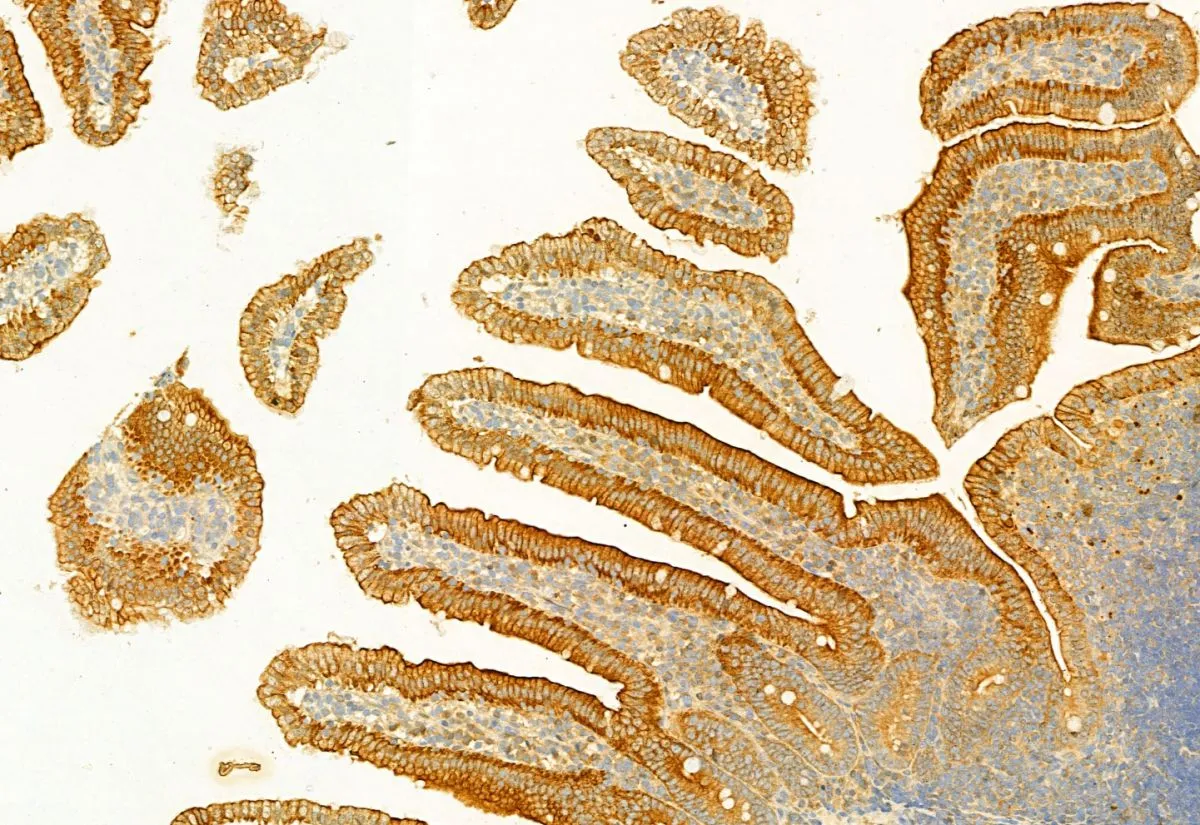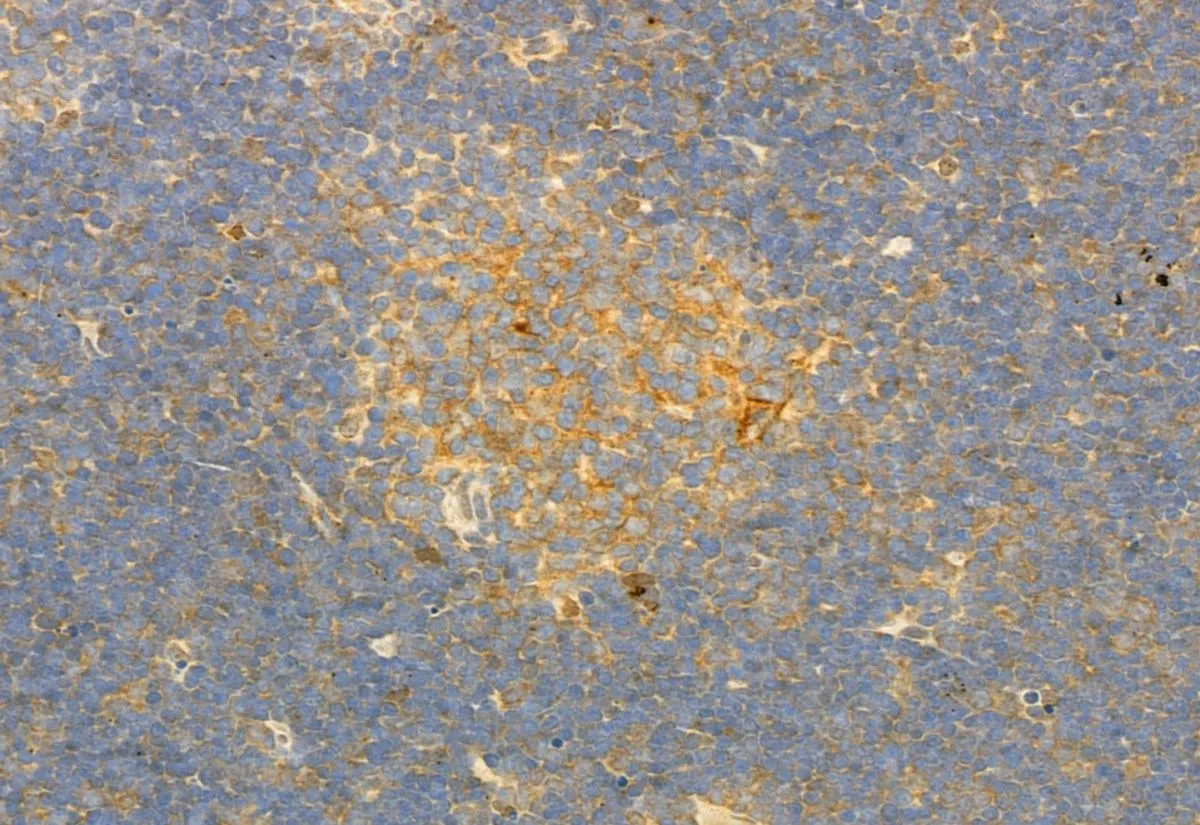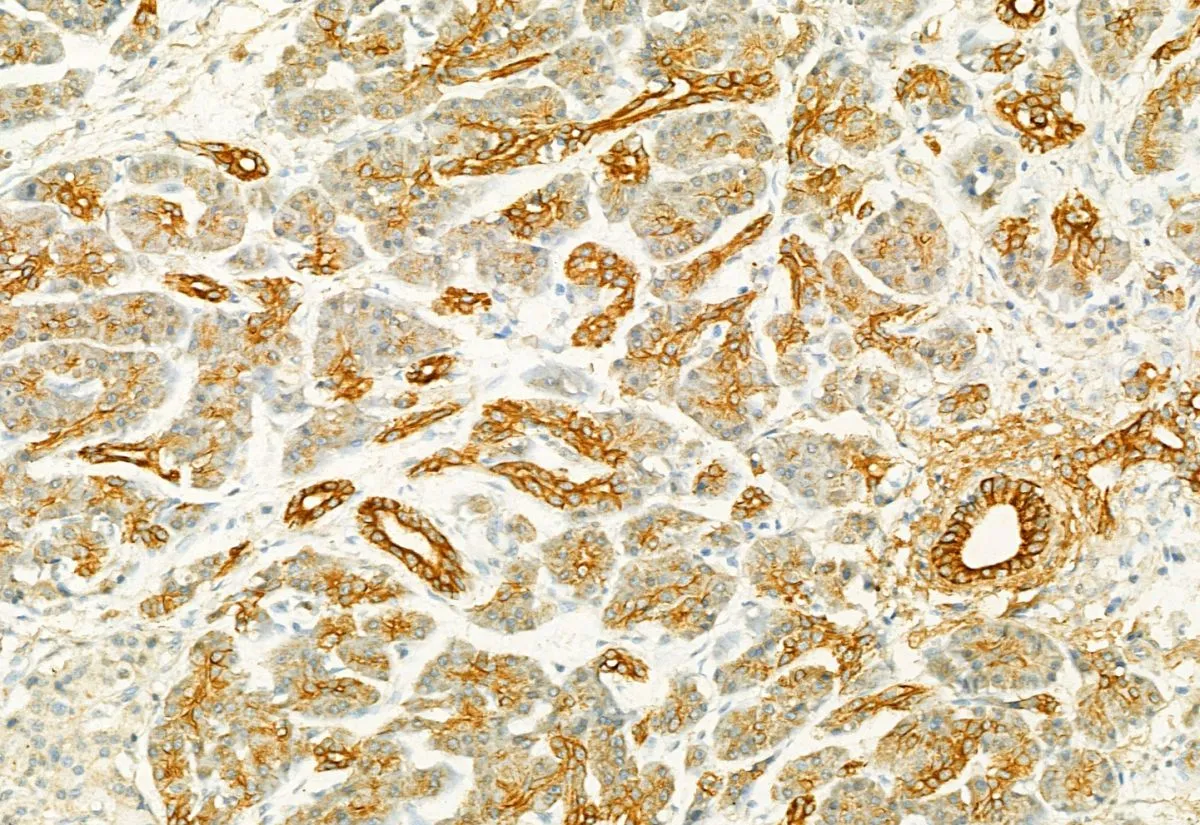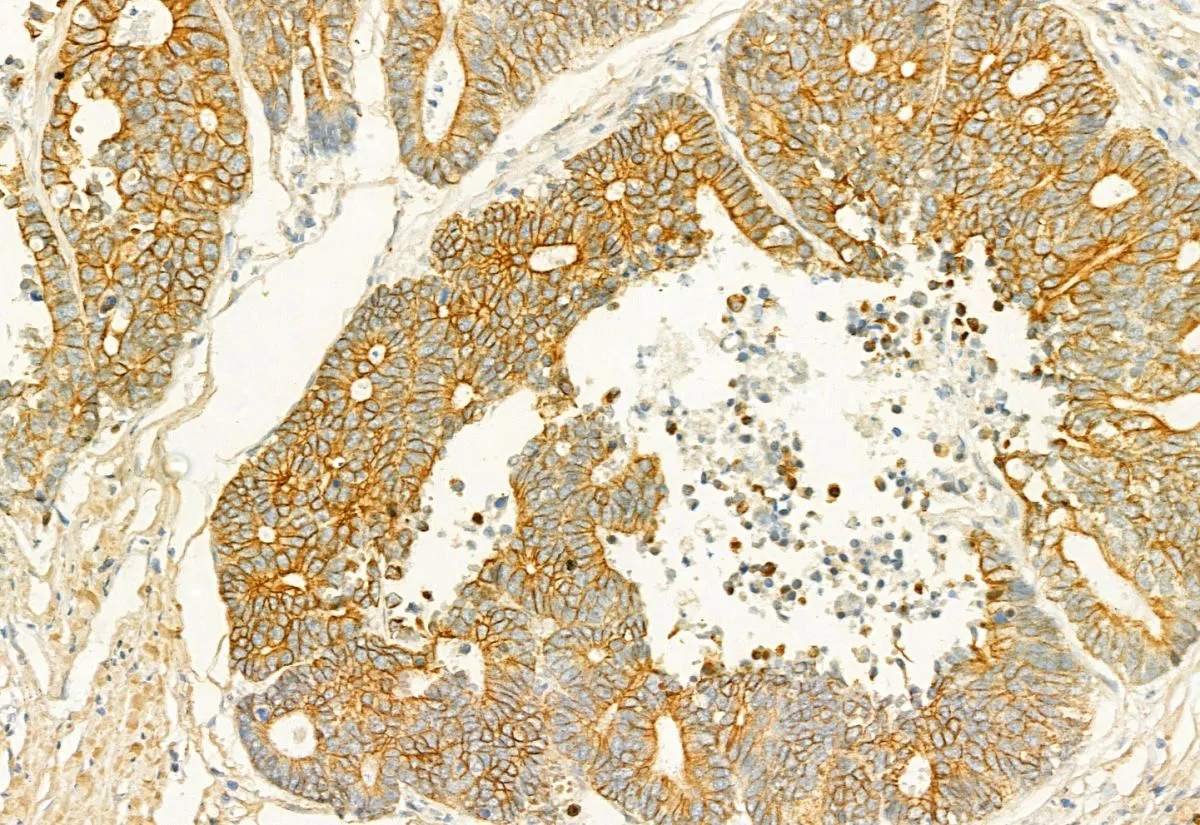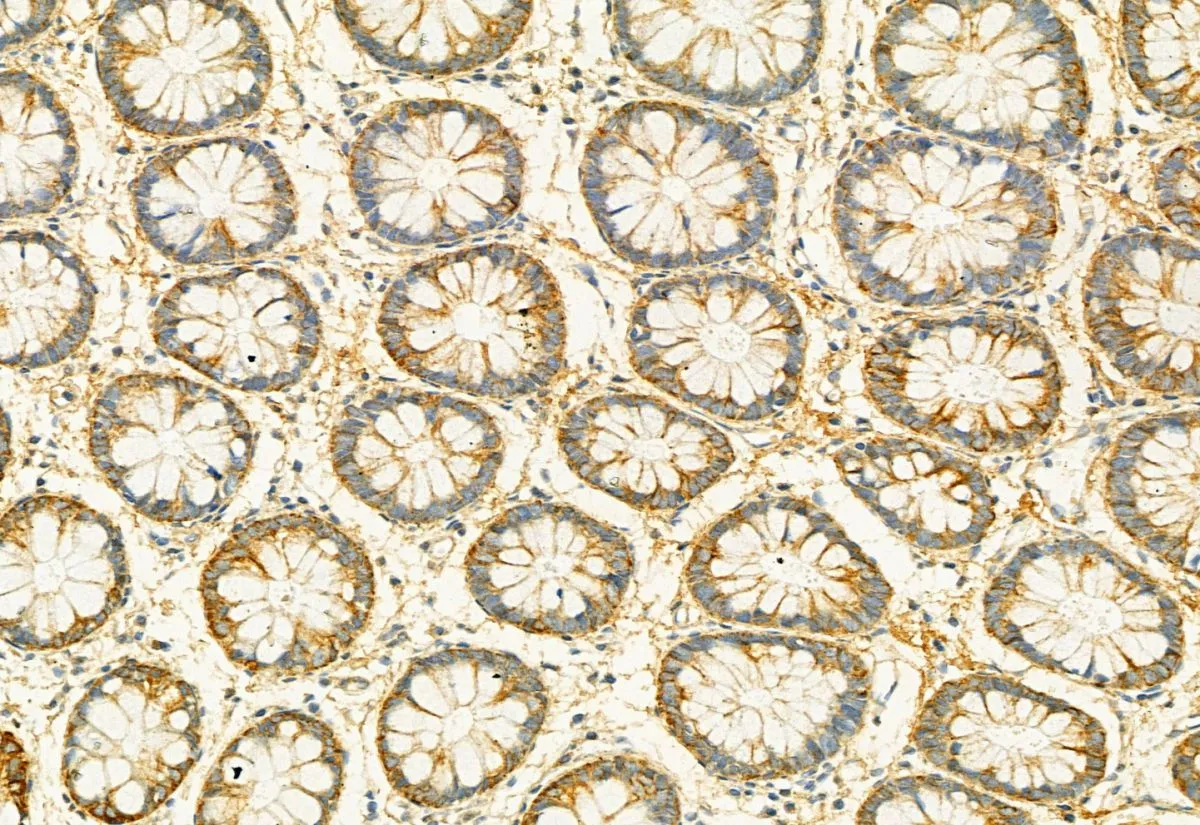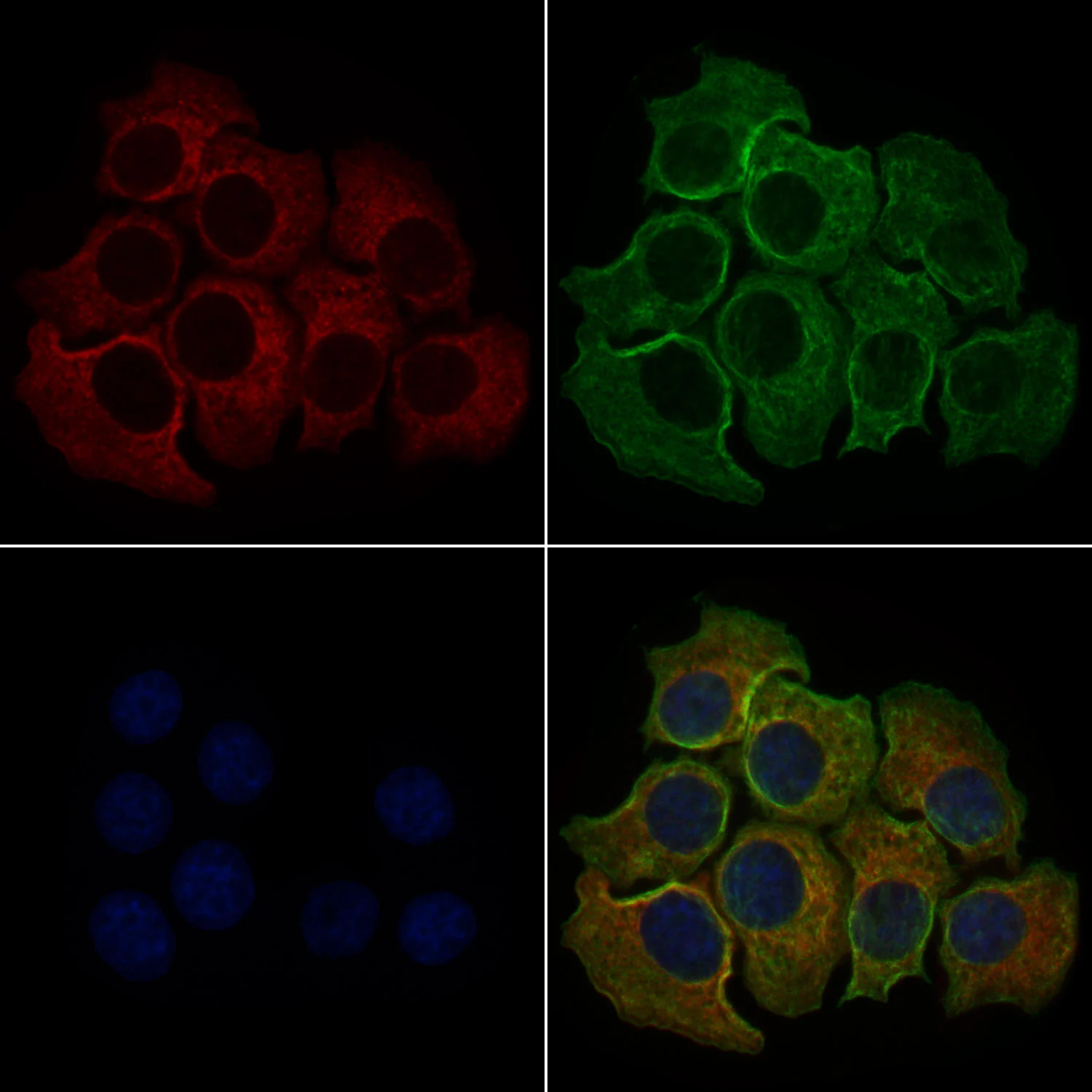
ICC/IF analysis of PFA-fixed HeLa cells using GTX02580 PLCE1 antibody. Red : Primary antibody Green : beta tubulin Blue : DAPI Permeabilization : 0.1% Triton X-100 Dilution : 1:200
PLCE1 antibody
GTX02580
ApplicationsImmunoFluorescence, Western Blot, ImmunoCytoChemistry, ImmunoHistoChemistry, ImmunoHistoChemistry Paraffin
Product group Antibodies
ReactivityHuman, Monkey, Mouse, Rat
TargetPLCE1
Overview
- SupplierGeneTex
- Product NamePLCE1 antibody
- Delivery Days Customer9
- Application Supplier NoteWB: 1:500-1:2000. ICC/IF: 1:100-1:500. IHC-P: 1:50-1:200. *Optimal dilutions/concentrations should be determined by the researcher.Not tested in other applications.
- ApplicationsImmunoFluorescence, Western Blot, ImmunoCytoChemistry, ImmunoHistoChemistry, ImmunoHistoChemistry Paraffin
- CertificationResearch Use Only
- ClonalityPolyclonal
- Concentration1 mg/ml
- ConjugateUnconjugated
- Gene ID51196
- Target namePLCE1
- Target descriptionphospholipase C epsilon 1
- Target synonyms1-phosphatidylinositol 4,5-bisphosphate phosphodiesterase epsilon-1; NPHS3; pancreas-enriched phospholipase C; phosphoinositide phospholipase C; phosphoinositide phospholipase C-epsilon-1; phosphoinositide-specific phospholipase C epsilon-1; PLCE; PLC-epsilon-1; PPLC
- HostRabbit
- IsotypeIgG
- Protein IDQ9P212
- Protein Name1-phosphatidylinositol 4,5-bisphosphate phosphodiesterase epsilon-1
- Scientific DescriptionThis gene encodes a phospholipase enzyme that catalyzes the hydrolysis of phosphatidylinositol-4,5-bisphosphate to generate two second messengers: inositol 1,4,5-triphosphate (IP3) and diacylglycerol (DAG). These second messengers subsequently regulate various processes affecting cell growth, differentiation, and gene expression. This enzyme is regulated by small monomeric GTPases of the Ras and Rho families and by heterotrimeric G proteins. In addition to its phospholipase C catalytic activity, this enzyme has an N-terminal domain with guanine nucleotide exchange (GEF) activity. Mutations in this gene cause early-onset nephrotic syndrome; characterized by proteinuria, edema, and diffuse mesangial sclerosis or focal and segmental glomerulosclerosis. Alternative splicing results in multiple transcript variants encoding distinct isoforms.[provided by RefSeq, Sep 2009]
- ReactivityHuman, Monkey, Mouse, Rat
- Storage Instruction-20°C or -80°C,2°C to 8°C
- UNSPSC12352203


